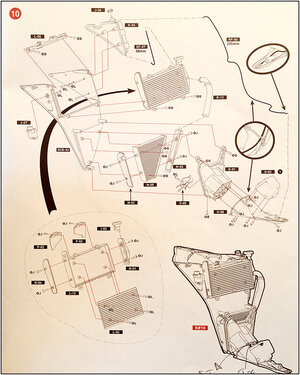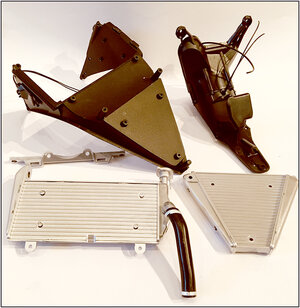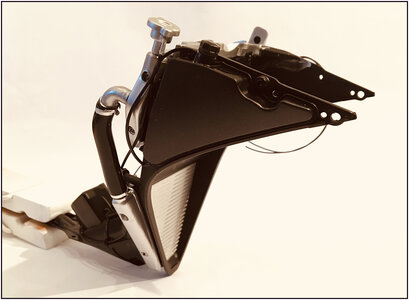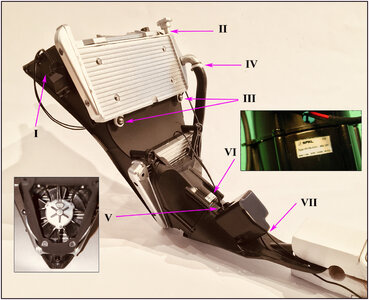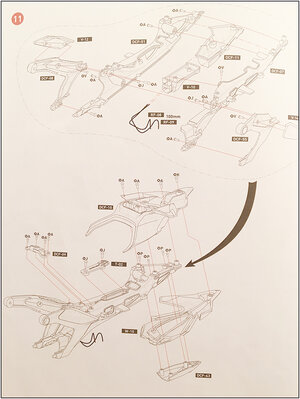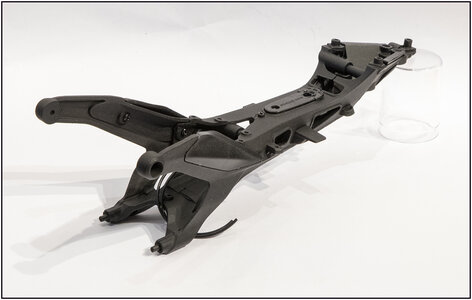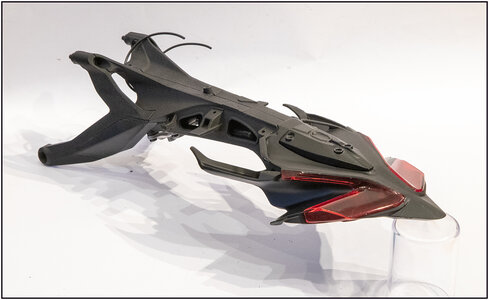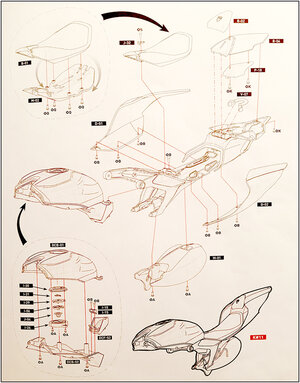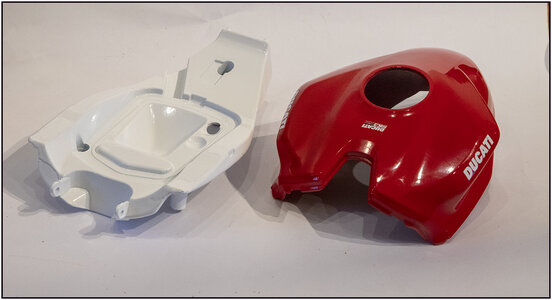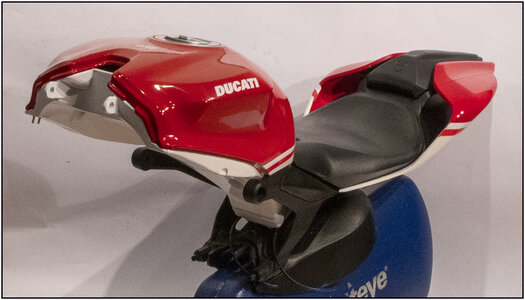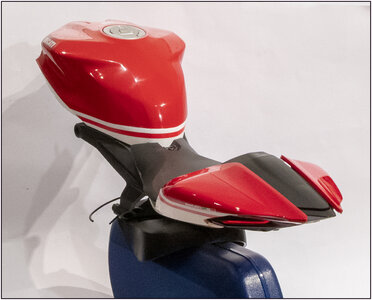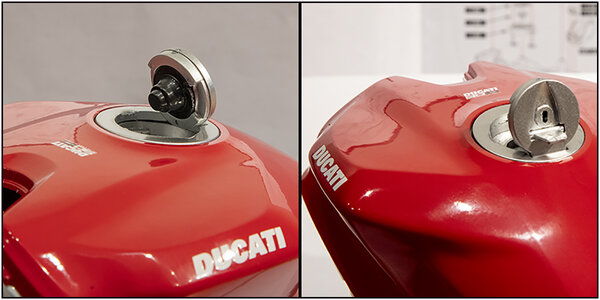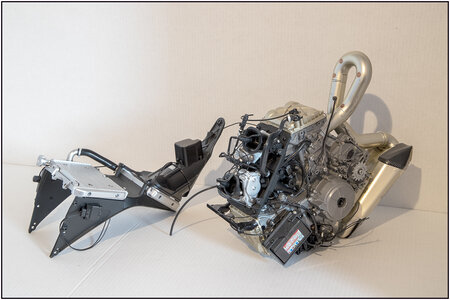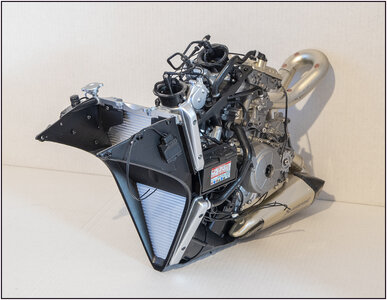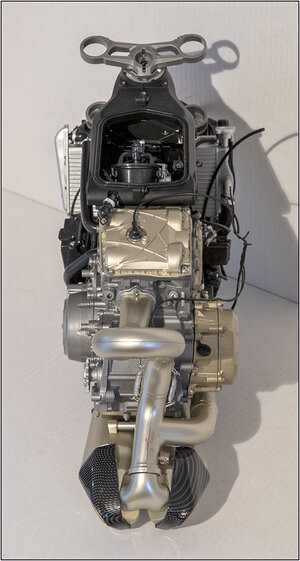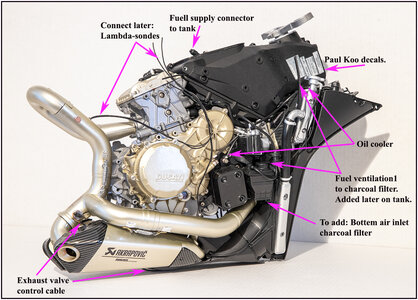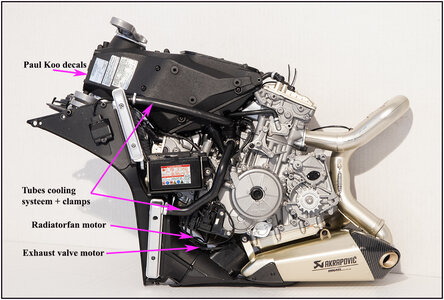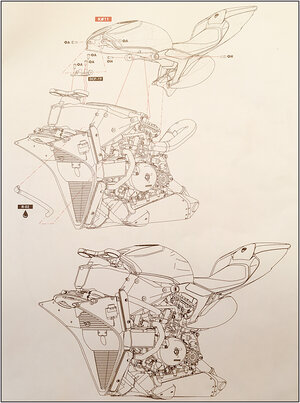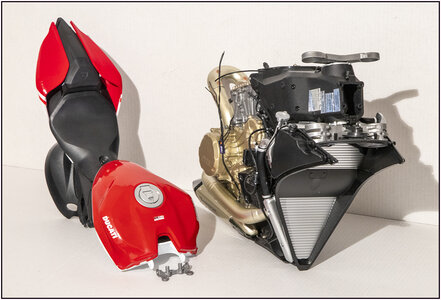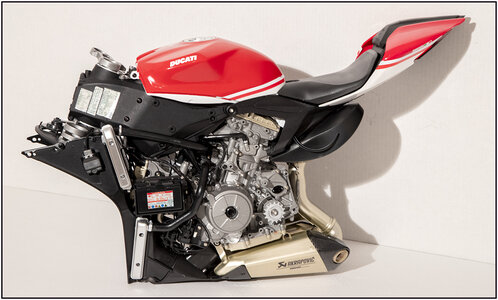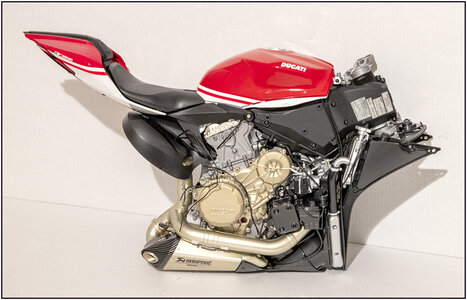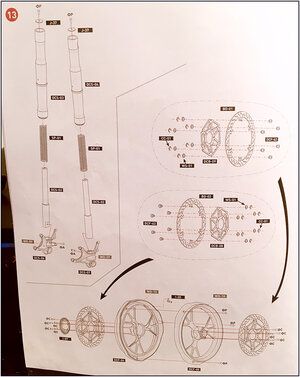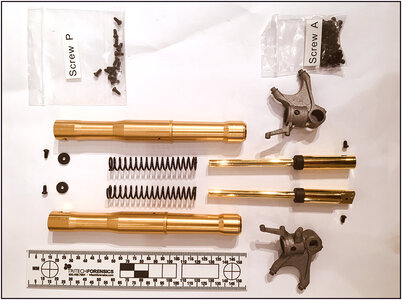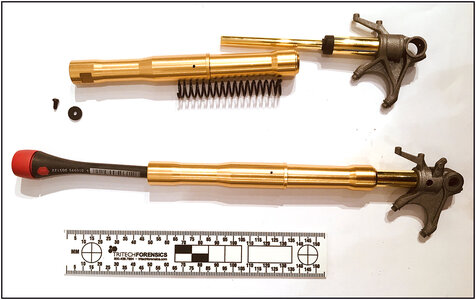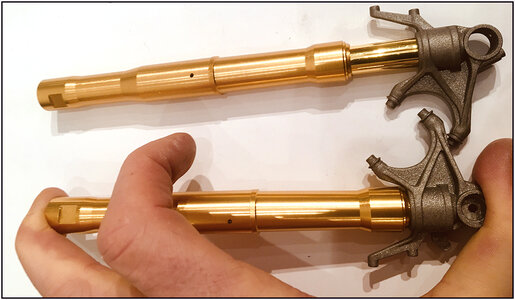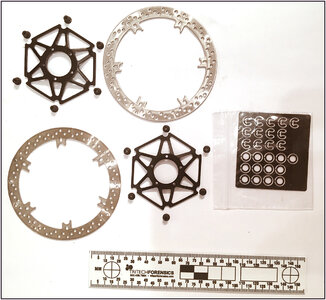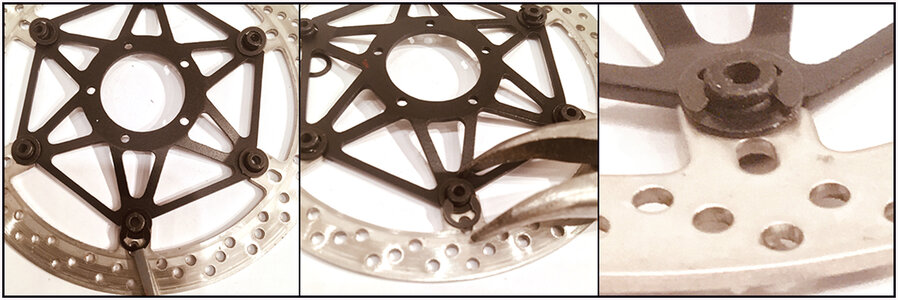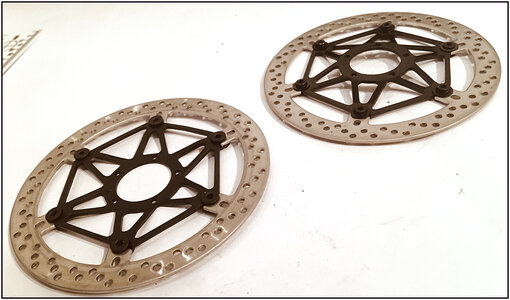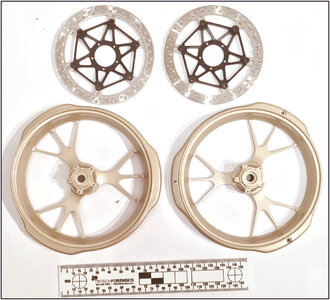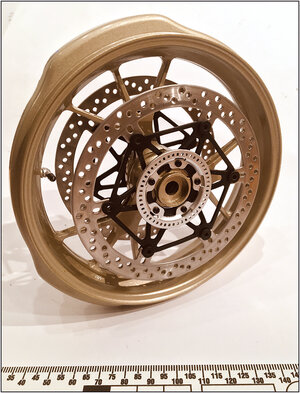Main Chassis:
The main chassis is build from different components. You have to build them separate and they will fit together step by step.
Chapter 9:
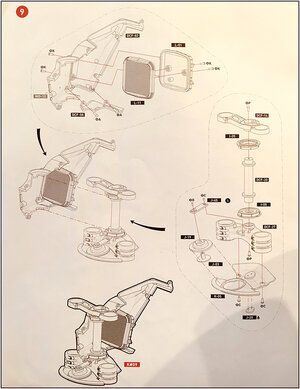
Half of the air-box and the steering head:
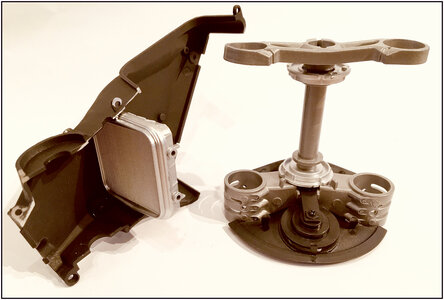
From the air-box one side flattened.
Fit together:

It will be fit on the engine later.
For other builders: the wholes in the top and bottom of the metal axle (DCF-20), before fitting the top and under metal crown-plates, must be tapped with the 2,3mm tap. Otherwise you can’t drive the screws till the end with the risk breaking of the head.
The previous model had many grey, unsprayed parts. Now they're all painted nice aluminum/metal.
Like the ball head bearings and the little radiator.
Regards, Peter
The main chassis is build from different components. You have to build them separate and they will fit together step by step.
Chapter 9:

Half of the air-box and the steering head:

From the air-box one side flattened.
Fit together:

It will be fit on the engine later.
For other builders: the wholes in the top and bottom of the metal axle (DCF-20), before fitting the top and under metal crown-plates, must be tapped with the 2,3mm tap. Otherwise you can’t drive the screws till the end with the risk breaking of the head.
The previous model had many grey, unsprayed parts. Now they're all painted nice aluminum/metal.
Like the ball head bearings and the little radiator.
Regards, Peter
Last edited:




